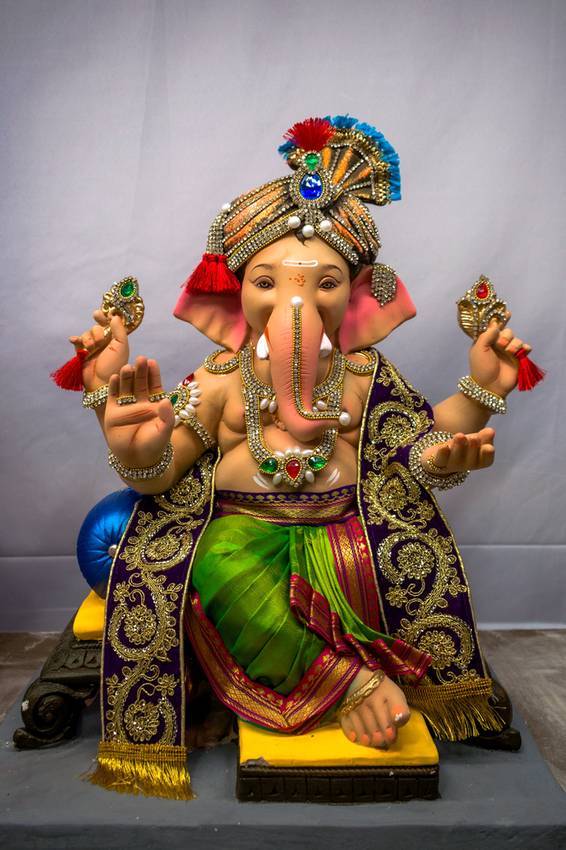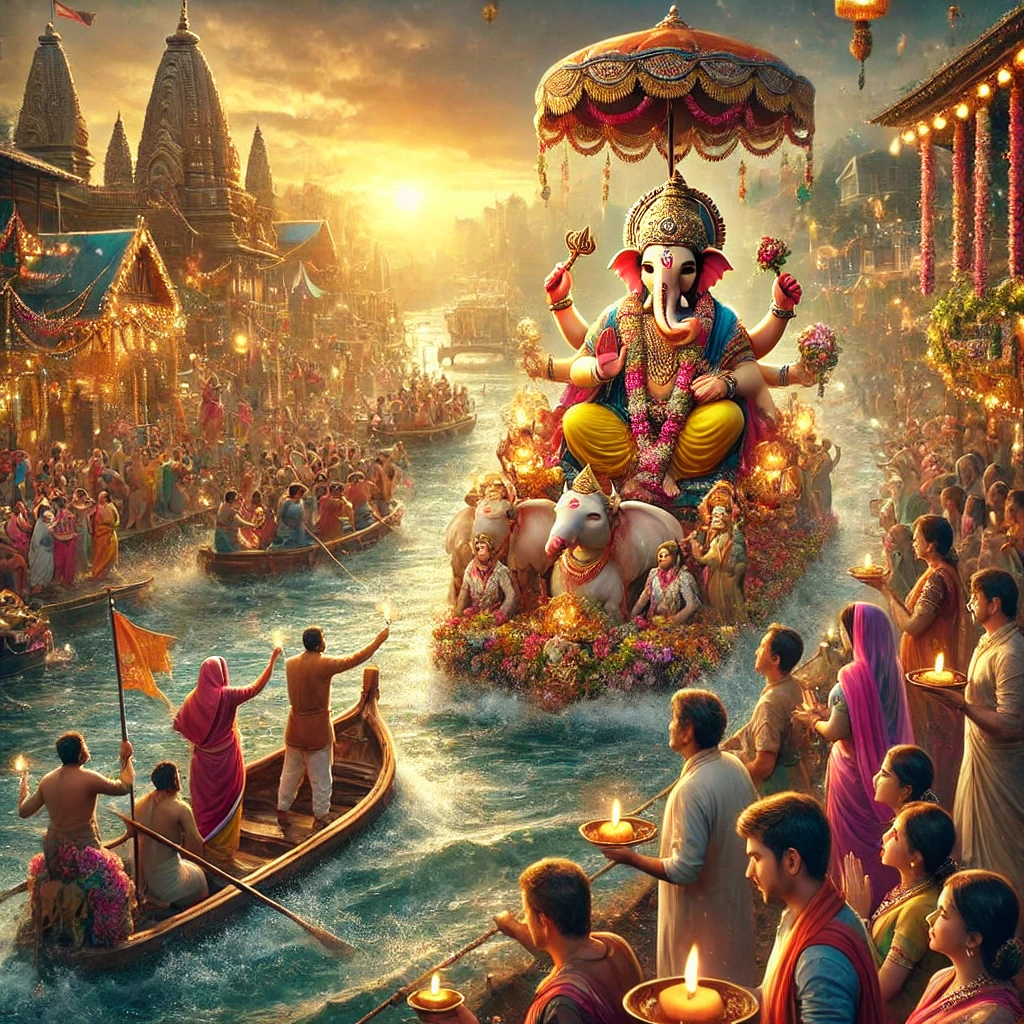Why is Ganesh Chaturthi celebrated and what are its main rituals?
Ganesh Chaturthi, also widely known as Vinayaka Chaturthi, is a cherished Hindu festival that celebrates the birth of Lord Ganesha—the remover of obstacles and the embodiment of wisdom and prosperity. Across India and in Indian communities worldwide, this ten-day festival stands out for its vibrant rituals, colorful decorations, and a profound spirit of unity. In 2025, Ganesh Chaturthi falls on August 27, and its cultural, spiritual, and ecological significance continues to inspire millions, especially students and young learners.
Ganesh Chaturthi 2025: History, Significance, Rituals & Celebrations
Historical Background and Cultural Importance
Ganesh Chaturthi traces its roots to ancient Hindu scriptures describing the birth of Lord Ganesha, the son of Lord Shiva and Goddess Parvati. Traditionally observed during the Bhadrapada month (August–September), the festival symbolizes the victory of wisdom and good over ignorance and evil.
Ganesh Chaturthi gained its current community-centric form in the late 19th century when freedom fighter Lokmanya Tilak encouraged large public celebrations in Maharashtra. This move united people against colonial rule and established the festival’s importance as both a religious and cultural event. Today, Ganesh Chaturthi is marked by public processions, art, devotional music, and community service, especially in states like Maharashtra, Karnataka, Andhra Pradesh, and Tamil Nadu.

Key Rituals and the Ten-Day Celebration
Each year, Ganesh Chaturthi unfolds over ten days, starting with Ganesh Sthapana (installation) and ending with Ganesh Visarjan (immersion). Rituals blend devotion with creativity and community participation:
- Day 1 (Chaturthi): Installation of Lord Ganesha idols at homes, schools, or public pandals. Special prayers mark the beginning.
- Daily aarti, chanting, and offerings of sweets like modak (Ganesha’s favorite) and laddus.
- Devotional songs, bhajans, art, and craft activities, especially among students.
- Community events and competitions such as rangoli, drawing, and essay writing.
- Day 10 (Anant Chaturdashi): Ganesh Visarjan—the farewell, where idols are immersed in water, symbolizing life’s cycle of creation and dissolution.

Significance for Students and Young Learners
For students, Ganesh Chaturthi is more than a festival—it is a hands-on lesson in cultural heritage, teamwork, discipline, and environmental consciousness. Schools and colleges often organize:
- Morning assemblies explaining the historical and spiritual legacy of the festival.
- Workshops on making eco-friendly Ganesha idols using clay, paper, or natural colors.
- Competitions in drawing, arts, craft, and essay writing centered on Lord Ganesha and sustainable celebrations.
- Group performances, devotional music, and aarti recitation.
- Talks and projects promoting water conservation and pollution-free Visarjan.
Explore resources like eco-friendly Ganesh idol making and Diwali celebrations for further inspiration.
Eco-friendly Ganesh Chaturthi: Responsible Celebration
Recent years have seen a shift towards environmental responsibility, as students and communities advocate for:
- Using clay or natural material idols instead of plaster of Paris, which harms water bodies.
- Avoiding chemical paints, plastic, thermocol for decorations.
- Immersing idols in designated tanks or buckets at home, minimizing water pollution.
- Sharing awareness messages about sustainability in school assemblies.
Find more eco-friendly festival tips in our World Pollution Control Day article.
Ways to Celebrate: Activities and Student Engagement
Students can engage creatively and meaningfully during Ganesh Chaturthi 2025:
- Organize group quizzes and storytelling sessions about Ganesha’s legends.
- Create rangoli, posters, and digital art depicting Lord Ganesha and eco-positive slogans.
- Host a poetry or slogan-writing contest with a theme on unity, wisdom, or environmental care.
- Encourage donations or charity work (annadanam, book drives) during the festival.
- Share festival experiences and tips for green celebrations in class or on school noticeboards.
Ganesh Visarjan: Symbolism and Message
The ritual of Ganesh Visarjan carries deep meaning. As the idol dissolves in water, devotees are reminded of the impermanence of life, the value of detachment, and the hope for new beginnings. Schools advocate for safe, eco-responsible immersion—using artificial tanks or buckets at home—and reinforce values such as:
- Responsibility towards nature and local water sources
- Community unity and cooperation
- Adaptability and respect for traditions, in line with modern sustainability needs
Date, Calendar & Key Facts: Ganesh Chaturthi 2025
| Year | Date | Main Highlights |
|---|---|---|
| 2025 | 27 August 2025 | Ganesh Chaturthi begins; ten-day rituals; focuses on eco-friendly celebrations |
| 2024 | 7 September 2024 | Previous festival; increased awareness of green Visarjan |
Ganesh Chaturthi 2025 is a time for celebration, reflection, and learning. By participating actively and responsibly, students not only honor tradition but also build skills for a sustainable future and a more harmonious society. For more cultural, educational, and environmentally themed festival pages, explore other Vedantu blogs and resources.
FAQs on Ganesh Chaturthi 2025: History, Rituals, and How to Celebrate
1. Why is Ganesh Chaturthi celebrated?
Ganesh Chaturthi is celebrated to mark the birth of Lord Ganesha, who is revered as the remover of obstacles and the god of wisdom and prosperity. The festival holds special significance in Hindu culture for these reasons:
- Commemorates Lord Ganesha's birth as per ancient legends
- Symbolizes new beginnings and the removal of difficulties
- Encourages community unity and social harmony
- Emphasizes eco-friendly practices and respect for nature in modern celebrations
2. What is the history behind Ganesh Chaturthi?
Ganesh Chaturthi originated from the mythological belief in Lord Ganesha’s birth and has grown into a public festival over time. The historical highlights include:
- The festival is rooted in ancient Hindu texts describing Ganesha’s creation by Goddess Parvati
- It gained popularity as a major public celebration in Maharashtra during the late 19th century, led by Lokmanya Tilak
- Focuses on unity, cultural pride, and public participation since the Indian freedom movement
3. When is Ganesh Chaturthi in 2025?
Ganesh Chaturthi 2025 will be observed on Saturday, 30 August 2025. The celebrations start on this date and continue for ten days, culminating in Ganesh Visarjan.
- This date is based on the Hindu lunar calendar – the Shukla Paksha Chaturthi in the month of Bhadrapada
- Both home and community (pandal) celebrations begin on this day
4. How is Ganesh Chaturthi celebrated in Maharashtra?
Ganesh Chaturthi is celebrated with exceptional grandeur in Maharashtra, especially in cities like Mumbai and Pune.
- Public pandals are decorated with elaborate Ganesha idols
- Devotees perform daily pujas, aartis, and distribute prasad
- Numerous cultural events, music, and skits are organized
- On the final day, Ganapati Visarjan (immersion) is done in rivers or seas amid grand processions
5. What rituals are followed during the 10 days of Ganesh Chaturthi?
Ganesh Chaturthi rituals span 10 days and follow traditional procedures to honor Lord Ganesha.
- Day 1: Murti Sthapana (idol installation) with prayers and decoration
- Daily: Puja, aarti, and offering of prasad like modaks
- Community and cultural activities including music, dances, and skits
- Day 10: Ganapati Visarjan (idol immersion) in water bodies with chants and farewell processions
6. What is the story behind Ganesh Chaturthi?
Ganesh Chaturthi celebrates the birth of Lord Ganesha. According to Hindu mythology:
- Goddess Parvati created Ganesha from sandalwood paste and gave him life
- He was assigned as her guard; Lord Shiva, not recognizing him, beheaded Ganesha
- On Parvati's request, Shiva restored his life and gave Ganesha the head of an elephant
- From then, he became the remover of obstacles and the first deity worshipped at new beginnings
7. What are some eco-friendly ways to celebrate Ganesh Chaturthi?
Eco-friendly Ganesh Chaturthi celebrations help protect the environment and promote sustainability. Some recommended practices include:
- Use clay idols (Shadu mati) instead of POP idols
- Decorate using natural materials and biodegradable items
- Avoid chemical paints; choose natural colors for idols
- Organize community celebrations to minimize resource usage
- Use artificial ponds for idol immersion where possible
8. What activities are done for Ganesh Chaturthi in schools?
Schools organize a variety of creative and educational activities during Ganesh Chaturthi to instill cultural values and creativity in students:
- Drawing and coloring competitions with Ganpati themes
- Storytelling sessions about the birth and importance of Lord Ganesha
- Skits, songs, and poetry recitations
- Making eco-friendly idols and posters
- Group prayers and distribution of prasad
9. How to make Ganesh Chaturthi drawings or posters?
To create Ganesh Chaturthi drawings or posters, follow these easy steps:
- Begin with the outline of Lord Ganesha’s head and trunk using pencil
- Fill in details like ears, crown, and ornaments for authenticity
- Color the drawing using bright shades and add traditional motifs like modaks, mouse, or lotus
- Write a creative slogan or wish such as “Happy Ganesh Chaturthi”
- Make sure to use eco-friendly materials
10. What are some popular Ganesh Chaturthi quotes and wishes?
Some well-known Ganesh Chaturthi wishes and quotes for greetings are:
- “May Lord Ganesha remove all obstacles from your path and fill your life with happiness!”
- “Ganpati Bappa Morya! May your home be blessed with peace and prosperity.”
- “Wishing you a joyful Ganesh Chaturthi 2025.”
- “Let us celebrate Ganesh Chaturthi by spreading kindness and eco-friendly values.”
11. How is Ganesh Chaturthi Visarjan performed safely?
Safely performing Ganesh Chaturthi Visarjan involves respectful and eco-conscious practices:
- Use natural clay idols to ensure the idol dissolves quickly and does not pollute water bodies
- Opt for artificial immersion tanks provided by local authorities
- Avoid throwing decorations, plastics, or harmful substances into rivers/lakes
- Participate in organized processions and follow safety guidelines for crowd management
12. What food or prasad is prepared for Ganesh Chaturthi?
Traditional foods offered as prasad during Ganesh Chaturthi include:
- Modak – sweet rice flour dumplings filled with coconut and jaggery (Ganesha’s favorite)
- Ladoo, Puran Poli, and Karanji – other special sweets
- Fruits and dry fruits
- Simple vegetarian meals as bhog







